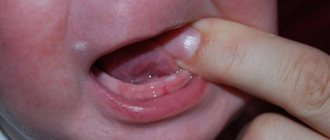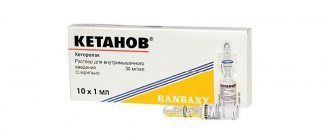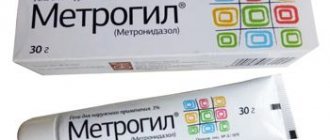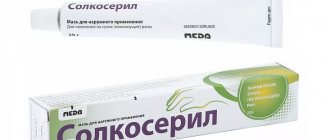Let's figure out what Ketanov helps with.
This drug is an extremely powerful pain reliever, which is often used after surgery, injury, or after childbirth. This medication helps with headaches as quickly as possible, since with its use the attack goes away within thirty minutes. The drug reaches full strength within the second hour after administration. “Ketanov” helps with headaches, and also with migraines, however, to combat these ailments you need to choose something not so strong. This medicine does not help fight dizziness, but has antipyretic and anti-inflammatory properties.
What kind of drug is this?
The drug "Ketanov" helps people with headaches very quickly and well. But it is better to use it in the case when a serious traumatic brain injury has been received, which causes severe pain, and in other more standard situations it is best to use analgin.
There are a lot of jokes about this drug among doctors because of its name. Patients easily remember it because the name of the drug is similar to their last name. In fact, it is an extremely powerful pain reliever. Its influence on the body is carried out at the deepest level. The medicine blocks the production of acids, which trigger the processes of pain, inflammation and heat.
"Ketanov" is taken very often for headaches.
A few basic points.
Our contemporaries have to deal with the need to relieve headaches quite often - constant stress, nervous tension, many hours of time spent working on the computer take their toll, and steadily. Exhaustion of the nervous system makes itself felt, and the most characteristic symptom will be a headache of varying degrees of severity and character - from paroxysmal to constant aching.
In addition, the occurrence of this syndrome is facilitated by changes in weather conditions and magnetic storms (exclusively in weather-sensitive people), as well as increased blood pressure, impaired blood supply to the brain and some inflammatory processes. Headaches can be triggered by taking medications that increase blood pressure levels, which will also cause headaches.
That is why the problem of choosing an antihypertensive drug is quite relevant. Taking into account the fact that now many drugs have begun to be openly counterfeited, consumers are trying to find a medicine that they can trust.
Ketanov is one of the few medications whose prescription does not lose relevance and always meets the expectations of patients (of course, if they use it correctly). By the way, it is impossible to prescribe a Ketanov tablet without first consulting your doctor - and this drug is sold only by prescription. So for any headaches, you can’t just get ketans at the pharmacy - you need a prescription.
How does this drug affect the body for headaches?
After taking the pill, the drug is absorbed into the blood from the digestive system and immediately begins to act. When the solution is administered, the active components immediately penetrate into the blood, which is why the effect of the drug on the human body begins very quickly and occurs with greater intensity than when taking other similar drugs. True, the duration of its effect is shorter compared to other tablets. When taking the drug, you can eat any food, as this will in no way affect the speed of action of the medicine. This is confirmed by the instructions for use of Ketanov. It helps quickly with headaches.
Advantages and disadvantages
The difference between Ketanov tablets and other painkillers. What are its advantages?
The active ingredient in this case is ketorolac (ketan tablets are the trade name). Ketorolac is one of the non-steroidal anti-inflammatory drugs, the analgesic effect (pain relief) of which is several times greater than the antipyretic and decongestant. It is for this reason that ketans are used specifically for pain relief, and not for increased body temperature.
The positive features of the Ketanov tablet over narcotic analgesics are that it does not depress the respiratory center and is not addictive, although the analgesic effect it provides is comparable in severity to the effect of narcotic analgesics.
Another very important property of ketanov is the combination of fast and long-lasting action. Thus, the use of ketanov is indicated for both acute and long-term aching pain.
In principle, many clinicians believe that this drug will be more effective than combination painkillers, which patients prefer to take in most cases. Some even say, “I don’t drink ketans, I make do with spasmalgon.”
In principle, this is correct, since ketanov has a lot of undesirable effects. It should be a reserve remedy; it should be used if there is no other way to relieve the pain. By the way, it is used not only orally - there is an injection form, the injection allows you to relieve pain faster.
It is important! You can take ketanov for pain even if it helped you at least once and was recommended by your doctor.
Dosing the medication
This drug is strictly contraindicated for children under the age of sixteen, and in addition, for pregnant and lactating women. The only exception is the risk of death due to painful shock.
For adult patients, the maximum dosage of Ketanov for headaches is nine tablets per day. As for normal dosages, they should not exceed more than one pill every five hours. If necessary, take two tablets three times. The course of treatment is only two days. It is worth noting that this anesthetic is used only to relieve pain until the patient reaches the attending physician.
If the patient is over sixty-five years old and weighs less than fifty kilograms, plus he has impaired renal function or there are other indications for particularly careful use of this medicine, then the maximum dose per day for such a patient should be a maximum of six tablets. In case of overdose, regular gastric lavage is used.
Is it possible to combine Ketanov for headaches with other medications?
Instructions for use of KETANOV
The maximum duration of treatment should not exceed 5 days.
Gastrointestinal bleeding, ulceration and perforation
Gastrointestinal bleeding, ulceration or perforation, which may be fatal, has been reported with the use of NSAIDs at any time during treatment, with or without warning symptoms or in the case of a history of severe gastrointestinal disorders. The risk of severe gastrointestinal bleeding depends on the dosage of the drug. This particularly applies to elderly patients who use ketorolac at an average daily dose of more than 60 mg. For these patients, as well as for patients who are concomitantly using low doses of acetylsalicylic acid or other drugs that may increase gastrointestinal risk, combination treatment with protective agents (eg, misoprostol or proton pump inhibitors) should be considered. Ketanov is used with caution in patients who are concomitantly receiving drugs that may increase the risk of ulceration or bleeding, such as oral corticosteroids, selective serotonin reuptake inhibitors, or antiplatelet agents such as acetylsalicylic acid. If gastrointestinal bleeding or ulceration occurs in patients receiving Ketanov, treatment should be discontinued.
Respiratory dysfunction
Caution is required when using the drug in patients with bronchial asthma (or with a history of asthma), since NSAIDs have been reported to accelerate the onset of bronchospasm in such patients.
Effect on kidney function
Prostaglandin biosynthesis inhibitors (including NSAIDs) have been reported to have nephrotoxic effects. The drug should be prescribed with caution to patients with impaired renal, cardiac, or liver function, since the use of NSAIDs may lead to deterioration of renal function. Patients with minor renal impairment are prescribed lower doses of ketorolac (those that do not exceed 60 mg/day IM or IV), and the renal condition of such patients should also be carefully monitored. As with other drugs that inhibit prostaglandin synthesis, increases in serum urea, creatinine and potassium have been reported during use of ketorolac tromethamine, which may occur after a single dose.
Cardiovascular, renal and liver disorders
The drug is prescribed with caution to patients with conditions that lead to a decrease in blood volume and/or a decrease in renal blood flow, when renal prostaglandins play a supporting role in ensuring renal perfusion. In these patients, renal function should be monitored. The volume reduction should be corrected and serum urea and creatinine levels and the volume of urine excreted carefully monitored until the patient becomes normovolemic. In patients on renal dialysis, the clearance of ketorolac was reduced by approximately half the normal rate, and the final T1/2 increased approximately threefold. Patients with impaired liver function due to cirrhosis did not have any clinically significant changes in ketorolac clearance or terminal T1/2. Borderline elevated values on one or more liver function tests may occur. These abnormalities may be temporary, may remain unchanged, or may progress with continued treatment. If clinical signs and symptoms indicate the development of liver disease or if systemic manifestations are observed, Ketanov should be discontinued.
Fluid retention and swelling
Fluid retention and edema have been reported during use of ketorolac, so the drug should be administered with caution to patients with cardiac decompensation, hypertension, or similar conditions.
Cardiovascular and cerebrovascular effects
There is currently insufficient information to assess such a risk for ketorolac tromethamine. Patients with uncontrolled hypertension, congestive heart failure, diagnosed coronary artery disease, peripheral arterial disease and/or cerebrovascular disease should be under medical supervision.
Systemic lupus erythematosus and mixed connective tissue diseases
In patients with systemic lupus erythematosus and various mixed connective tissue diseases, the risk of developing aseptic meningitis increases.
Dermatological reactions
Ketanov should be discontinued at the first signs of a skin rash, damage to the mucous membranes or any other signs of hypersensitivity.
Anaphylactic (anaphylactoid) reactions
As with the use of other NSAIDs, anaphylactic (anaphylactoid) reactions (including anaphylaxis, bronchospasm, flushing, rash, hypotension, laryngeal edema, angioedema) may occur in patients who have no or no history of hypersensitivity reactions to aspirin, other NSAIDs or ketorolac. This set of symptoms may also occur in individuals with a history of bronchospastic reactivity (eg, asthma) and nasal polyps. Anaphylactoid reactions, such as anaphylaxis, can be fatal. Therefore, ketorolac should not be taken by patients with a history of asthma and patients with a complete or incomplete combination of bronchial asthma, recurrent nasal polyposis and paranasal sinuses, and Quincke's edema. If anaphylactoid reactions occur, seek emergency medical attention.
Hematological effects
Patients with bleeding disorders should not be prescribed Ketanov. Patients receiving anticoagulant therapy may have an increased risk of bleeding if ketorolac is used concomitantly. The condition of patients who are receiving other drugs that can affect the rate of bleeding control should be carefully monitored when prescribing ketorolac. In controlled clinical trials, the incidence of significant postoperative bleeding was less than 1%. Ketorolac inhibits platelet aggregation and prolongs bleeding time. In patients with normal bleeding time, the duration of bleeding increased, but did not go beyond the normal range of 2-11 minutes. In contrast to the long-term effects resulting from the use of acetylsalicylic acid, platelet function returns to normal within 24-48 hours after discontinuation of ketorolac. Ketorolac should not be prescribed to patients who have undergone surgery with a high risk of bleeding or incomplete control of bleeding. Caution should be used if mandatory bleeding control is critical. Ketanov is not an anesthetic agent and does not have sedative or anxiolytic properties; therefore, it is not recommended as a pre-operative sedative to maintain anesthesia.
Use in pediatrics
The drug is not used in children and adolescents under 16 years of age.
Impact on the ability to drive vehicles and operate machinery
Some patients may experience drowsiness, dizziness, vertigo, insomnia, fatigue, blurred vision, or depression when using ketorolac. If the patient experiences the above or other similar side effects, you should not drive or operate machinery.
Interaction with other medications
This medicine should be taken with great caution when taking medications that thin the blood, as such measures may cause bleeding. “Ketanov” also interacts very poorly with medications intended to treat kidney failure and has a negative impact on the condition of the body. This drug also neutralizes diuretics and reduces the dosage of other analgesics.
Many people are interested in whether Ketanov helps with headaches and whether it is safe.
Side effects
The drug can affect the functioning of blood vessels and the heart, which can cause fainting along with changes in heart rate and blood pressure. The presented drug is not used as an analgesic during childbirth, and in addition, against the background of cosmetic operations or in the field of plastic surgery.
Among other things, this medication can cause nausea in people, along with diarrhea and constipation, bloating and pain in the abdomen, dry mouth, gastritis, stomach ulcers and liver problems. Sometimes Ketanov can cause blood or protein to appear in the urine, and frequent urination is also possible.
Despite the fact that some patients treat headaches with Ketanov, with long-term use it can itself cause headaches, as well as dizziness. In addition, this drug can make patients feel drowsy, euphoric, or depressed. When taking it, people often experience changes in their taste sensations while eating, and their vision and functioning of the vestibular apparatus decrease. In extremely rare situations, there are cases in which taking a medicine provokes a feeling of suffocation in patients.
In fact, it must be emphasized that “Ketanov” has an extremely adverse effect on the state of the human body, as well as on the composition of the blood and negatively affects its coagulation. Sometimes it provokes various allergic reactions along with muscle pain.
Considering that this drug can lower concentrations, after using it you should not engage in any dangerous activities or drive a car.
Is it possible to drink Ketanov for headaches and does it have any contraindications?
Ketanov 10 mg 100 pcs. film-coated tablets
pharmachologic effect
NSAID, derivative of pyrrolysine-carboxylic acid. It has a pronounced analgesic effect, and also has anti-inflammatory and moderate antipyretic effects. The mechanism of action is associated with inhibition of the activity of COX, the main enzyme in the metabolism of arachidonic acid, which is a precursor of prostaglandins, which play a major role in the pathogenesis of inflammation, pain and fever.
Composition and release form Ketanov 10 mg 100 pcs. film-coated tablets
Tablets - 1 tablet: ketorolac tromethamine 10 mg.
10 pieces. — contour cell packaging (10) — cardboard packs.
Description of the dosage form
Film-coated tablets.
Directions for use and doses
For adults, when taken orally - 10 mg every 4-6 hours, if necessary - 20 mg 3-4 times a day.
For intramuscular administration, a single dose is 10-30 mg, the interval between injections is 4-6 hours. The maximum duration of use is 2 days.
Maximum doses: when taken orally or intramuscularly - 90 mg/day; for patients weighing up to 50 kg, with impaired renal function, as well as for persons over 65 years of age - 60 mg/day.
Pharmacodynamics
The analgesic effect occurs after approximately 30 minutes, the maximum analgesic effect develops after 1-2 hours. The duration of the analgesic effect is 4-6 hours or more, depending on the dose. Does not have a sedative or anxiolytic effect, does not affect opioid receptors. It does not have a depressant effect on the respiratory center and does not enhance respiratory depression and sedation caused by opioid analgesics. Does not cause drug dependence. No withdrawal symptoms occur after abrupt cessation of use. Suppresses platelet aggregation and may cause prolongation of bleeding time. Restoration of platelet function occurs 24-48 hours after discontinuation of the drug.
Pharmacokinetics
When taken orally, it is absorbed from the gastrointestinal tract. Cmax in blood plasma is achieved 40-50 minutes after both oral and intramuscular administration. Eating does not affect absorption. Plasma protein binding is more than 99%.
T1/2 ;- 4-6 hours both after oral administration and after intramuscular administration.
More than 90% of the dose is excreted in the urine, unchanged - 60%; the remaining amount is through the intestines.
In patients with impaired renal function and the elderly, the elimination rate decreases, T1/2 increases.
Indications for use Ketanov 10 mg 100 pcs. film-coated tablets
For short-term relief of moderate and severe pain of various origins.
Contraindications
Erosive and ulcerative lesions of the gastrointestinal tract in the acute phase, the presence or suspicion of gastrointestinal bleeding and/or cerebral hemorrhage, a history of blood coagulation disorders, conditions with a high risk of bleeding or incomplete hemostasis, hemorrhagic diathesis, moderate and severe renal dysfunction ( serum creatinine content more than 50 mg/l), the risk of developing renal failure due to hypovolemia and dehydration; “aspirin triad”, bronchial asthma, nasal polyps, history of angioedema, preventive pain relief before and during surgery, childhood and adolescence up to 16 years of age, pregnancy, childbirth, lactation, hypersensitivity to ketorolac, acetylsalicylic acid and other NSAIDs .
Application of Ketanov 10 mg 100 pcs. film-coated tablets during pregnancy and breastfeeding
Contraindicated during pregnancy, during childbirth and during lactation (breastfeeding).
Ketorolac is contraindicated for use as a premedication, maintenance of anesthesia and for pain relief in obstetric practice, since its influence may increase the duration of the first stage of labor. In addition, ketorolac may inhibit uterine contractility and fetal circulation.
Use with caution in patients with impaired renal function.
Use in children
Contraindicated in children and adolescents under 16 years of age.
special instructions
Use with caution in patients with impaired liver and kidney function, chronic heart failure, arterial hypertension, in patients with erosive and ulcerative lesions of the gastrointestinal tract and a history of bleeding from the gastrointestinal tract.
Ketorolac should be used with caution in the postoperative period in cases where particularly careful hemostasis is required (including after resection of the prostate gland, tonsillectomy, in cosmetic surgery), as well as in elderly patients, because The half-life of ketorolac is prolonged and plasma clearance may be reduced. In this category of patients, it is recommended to use ketorolac in doses close to the lower limit of the therapeutic range. If symptoms of liver damage, skin rash, or eosinophilia appear, ketorolac should be discontinued. Ketorolac is not indicated for use in chronic pain syndrome.
Impact on the ability to drive vehicles and operate machinery
If drowsiness, dizziness, insomnia or depression appear during treatment with ketorolac, special care must be taken when engaging in potentially hazardous activities that require increased attention and speed of psychomotor reactions.
Overdose
Symptoms: (with a single dose) abdominal pain, nausea, vomiting, peptic ulcers, impaired renal function (these symptoms disappeared after discontinuation of the drug). Treatment: symptomatic therapy. Dialysis does not significantly remove ketorolac from the blood.
Side effects of Ketanov 10 mg 100 pcs. film-coated tablets
From the cardiovascular system: rarely - bradycardia, changes in blood pressure, palpitations, fainting.
From the digestive system: nausea, abdominal pain, diarrhea are possible; rarely - constipation, flatulence, feeling of gastrointestinal fullness, vomiting, dry mouth, thirst, stomatitis, gastritis, erosive and ulcerative lesions of the gastrointestinal tract, liver dysfunction.
From the central nervous system and peripheral nervous system: anxiety, headache, drowsiness are possible; rarely - paresthesia, depression, euphoria, sleep disturbances, dizziness, changes in taste, visual disturbances, motor disorders.
From the respiratory system: rarely - respiratory failure, attacks of suffocation.
From the urinary system: rarely - increased frequency of urination, oliguria, polyuria, proteinuria, hematuria, azotemia, acute renal failure.
From the blood coagulation system: rarely - nosebleeds, anemia, eosinophilia, thrombocytopenia, bleeding from postoperative wounds.
From the metabolic side: ;possible increased sweating, swelling; rarely - oliguria, increased levels of creatinine and/or urea in the blood plasma, hypokalemia, hyponatremia.
Allergic reactions: possible skin itching, hemorrhagic rash; in isolated cases - exfoliative dermatitis, urticaria, Lyell's syndrome, Stevens-Johnson syndrome, anaphylactic shock, bronchospasm, Quincke's edema, myalgia.
Other: ;possible fever.
Local reactions: pain at the injection site.
Drug interactions
When ketorolac is used concomitantly with other NSAIDs, additive side effects may develop; with pentoxifylline, anticoagulants (including heparin in low doses) - the risk of bleeding may increase; with ACE inhibitors - there may be an increased risk of developing renal dysfunction; with probenecid - the plasma concentration of ketorolac and its half-life increase; with lithium preparations - a decrease in the renal clearance of lithium and an increase in its concentration in plasma is possible; with furosemide - reducing its diuretic effect.
When using ketorolac, the need for the use of opioid analgesics for pain relief is reduced.
Contraindications to the use of the medicine
So, as you can already see, such an effective drug as Ketanov can also be dangerous at the same time due to the large number of various side effects and the general negative impact on the human body. In addition to this, it should be borne in mind that this medicine should never be used if you have the following diseases:
- In case of exacerbation of a stomach ulcer.
- In case of bleeding and hemorrhages in the stomach.
- If there is bleeding in the brain.
- If you have poor blood clotting.
- In case of blood diseases.
- Against the background of diathesis.
- If there is damage to the liver or kidneys.
- If a person has bronchial asthma.
- If the patient has polyps or swelling.
- During pregnancy, childbirth or breastfeeding.
- If the patient develops an allergic reaction to aspirin.
Will Ketanov help with headaches after alcohol?
Alcohol is one of the strongest toxic substances that disrupts the activity of all organic structures. Alcohol is especially dangerous for the liver, the filter of our body. "Ketanov" also harms the liver. If you take these substances together, the toxic effect on liver activity will be significantly higher. In addition, when taking Ketanov with alcohol, the therapeutic effect of the tablets is annulled, and if the patient increases the dosage, the severity of the drug’s adverse reactions increases.
Combining alcohol with the drug "Ketanov" often provokes damage to the mucous tissues of the stomach, which is dangerous due to the occurrence of ulcerative formations.
Contraindications
This drug should not be used in pediatric practice, nursing mothers, or in patients with individual intolerance.
In addition, the drug is not recommended for people with various neurological pathologies, consisting of problems in the functioning of the central and peripheral nervous system, since one of the side effects of ketanov is mental disorder.
In terms of whether it is possible to drink ketanov for pain and to whom it should be prescribed, only the attending physician should make a final conclusion. And so - you can only find good reviews about it.
Drug price
Intramuscular injections of "Ketanov" act very quickly. Ampoules of this drug are cheaper than other similar products, but in no case can they be treated for a long time. As a rule, the maximum course lasts only two days, which is why the packages of this drug are so small.
An ordinary pack of twenty tablets can cost from sixty to two hundred rubles. In the pharmacy chain you can also purchase packs of one hundred tablets. Such a medicine will cost an average of two hundred to three hundred rubles. Injection solutions are much cheaper. For example, for one package with ten ampoules the price for “Ketanov” will be only one hundred rubles.
Now let’s find out what people write in their comments about this drug.
Reviews of "Ketanov" for headaches
A drug called Ketanov, according to consumers leaving their reviews on the Internet, is an excellent pain reliever. People write about it that this medicine is very powerful and fast-acting.
Many patients say that they drink it for migraines. It is noted that in this case, after half an hour there is a significant improvement in well-being. Thanks to the use of the drug "Ketanov", people are able to forget about pain for several hours, which allows them to continue to do their usual activities, instead of suffering from an attack. Consumers also praise this drug for its help with pain that occurs due to fractures. It is reported that “Ketanov” very quickly and effectively helps eliminate it.
In addition, in general, according to reviews, it can be said that the price of this drug is becoming outdated for people. In addition, patients report that they notice few side effects when using this drug. But nevertheless they exist, for example, consumers complain of nausea and irresistible dry mouth. And besides, some people say that after taking Ketanov, everything floats before their eyes, their blood pressure drops, and the like.
There are also many reviews in which people write about the drug "Ketanov" that it is a very strong and at the same time harmful medicine. In this regard, doctors advise their patients to take this drug only if something really seriously hurts and worries the person. And in other more harmless situations, it is better to seek help from other less powerful and safer medications.
KETANOV MD
Concomitant use of ketorolac with acetylsalicylic acid or other non-steroidal anti-inflammatory drugs (including cyclooxygenase-2 inhibitors), calcium preparations, glucocorticosteroids, ethanol, corticotropin can lead to a significant increase in the risk of adverse reactions, including the formation of gastrointestinal ulcers and the development of gastrointestinal bleeding. Concomitant use with non-steroidal anti-inflammatory drugs is contraindicated.
Simultaneous use with paracetamol increases nephrotoxicity, and with methotrexate - hepato- and nephrotoxicity. The simultaneous use of ketorolac and methotrexate is possible only when using low doses of the latter (monitor the concentration of methotrexate in the blood plasma).
Probenecid reduces the plasma clearance and volume of distribution of ketorolac, increases its concentration in the blood plasma and increases its half-life.
Concomitant use with indirect anticoagulants, heparin, thrombolytics, antiplatelet agents, cefoperazone, cefotetan and pentoxifylline increases the risk of bleeding. Concomitant use with anticoagulants (including warfarin and heparin) and pentoxifylline is contraindicated. Reduces the effect of antihypertensive and diuretic drugs (the synthesis of prostaglandins in the kidneys decreases).
When combined with opioid analgesics, the doses of the latter can be significantly reduced.
Antacids do not affect the absorption of the drug.
Ketorolac enhances the hypoglycemic effect of insulin and oral hypoglycemic drugs (dose recalculation is necessary).
Concomitant use with sodium valproate causes disruption of platelet aggregation.
Increases the plasma concentration of verapamil and nifedipine.
When used with other nephrotoxic drugs (including gold preparations), the risk of developing nephrotoxicity increases. Drugs that block tubular secretion reduce the clearance of ketorolac and increase its concentration in the blood plasma.
Concomitant use with probenecid leads to an increase in the plasma concentration and half-life of ketorolac. Concomitant use with probenecid is contraindicated. The simultaneous use of lithium salts and certain drugs that suppress the synthesis of prostaglandins leads to impaired excretion and an increase in the plasma concentration of lithium salts. Simultaneous use with lithium salts is contraindicated.
When using cyclosporine, tacrolimus with ketorolac (as with other NSAIDs), caution is recommended due to the increased risk of nephrotoxicity. Cases of hematoma formation have been reported in HIV-infected patients with hemophilia receiving concomitant zidovudine and ibuprofen. Therefore, caution should be exercised when using NSAIDs and zidovudine simultaneously. Ketorolac does not affect the binding of digoxin to blood proteins.
According to animal studies, the concomitant use of NSAIDs with quinolone antibiotics increases the risk of seizures.
It is not recommended to use NSAIDs for 8-12 days after using mifepristone, as the effect of mifepristone may be reduced.
conclusions
Thus, the presented medicinal product is very effective and powerful in its effect, therefore it perfectly helps to cope with headaches. But, as noted by many people in reviews, it is also capable of causing certain unwanted side reactions. Therefore, it can hardly be said that this medication has a gentle effect on the patient’s body. But, despite these or those shortcomings, as many people note in the comments, Ketanov is an excellent pain reliever with an affordable and attractive price. People drink it for a wide variety of pain, be it migraines, serious bruises, injuries, and so on.
We looked at what Ketanov helps with.
Causes of hangover
The main factors influencing the severity of a hangover are:
- Individual characteristics of alcohol processing in the liver
- Amount of alcohol consumed
- Alcohol quality
It is known that ethyl alcohol is a toxic product in itself and we mostly notice its effect soon after consumption. As time passes, the deterioration of our well-being is caused by products formed in the liver when it has already worked hard on drinking.
As a result of the metabolism of ethanol in the liver, it produces acetaldehyde, which is much more toxic than the original product. It is what causes most of the symptoms of a hangover, and also contributes to the development of alcoholic cirrhosis of the liver over time.
Depending on the individual capabilities of the body, some have a well-developed system for processing alcohol itself and they can drink quite a lot and not get drunk right away, but in the morning they experience a whole range of unpleasant sensations.
For the latter, intoxication occurs early, but in the morning they feel fresh and rested. Those whose bodies process both ethanol and acetaldehyde equally well can be considered “lucky”.
The way alcohol is processed in the liver may change with age and duration of alcohol consumption.
The individual characteristics of each person often depend on their gender, weight and nationality. As a rule, women cope worse with alcohol intoxication and also have a higher risk of developing alcoholic cirrhosis of the liver.
For children, due to their small body weight and the immaturity of some liver enzyme systems, it will be enough to eat sweets with liqueur for poisoning. It is also known that in Asia and among the peoples of the north there is a widespread deficiency of enzymes that process acetaldehyde.
Such people not only get more sick from a hangover, they can get seriously poisoned because of this feature. The preoccupation of liver enzyme systems with the metabolism of alcohol and its products prevents the liver from synthesizing glucose and other important substances. This causes weakness, irritability, and sometimes sticky cold sweat.
The amount of alcohol undoubtedly matters: the more alcohol, the more toxic products of its breakdown.
Speaking about quality, we will not dwell on the dangers of obviously surrogate alcohol containing methyl alcohol or ethylene glycol. These substances are extremely toxic and cause poisoning in relatively small doses, so when consuming them, you should not be afraid of a hangover. In relation to quality, it is worth noting that in addition to ethanol itself and its metabolites, so-called fusel oils, which give various types of alcohol a specific color and taste, can have a toxic effect.
More of these substances enter the body when drinking large quantities of drinks with low alcohol content, as well as when drinking such popular drinks as whiskey and cognac. In relation to this, vodka probably has a certain advantage.











